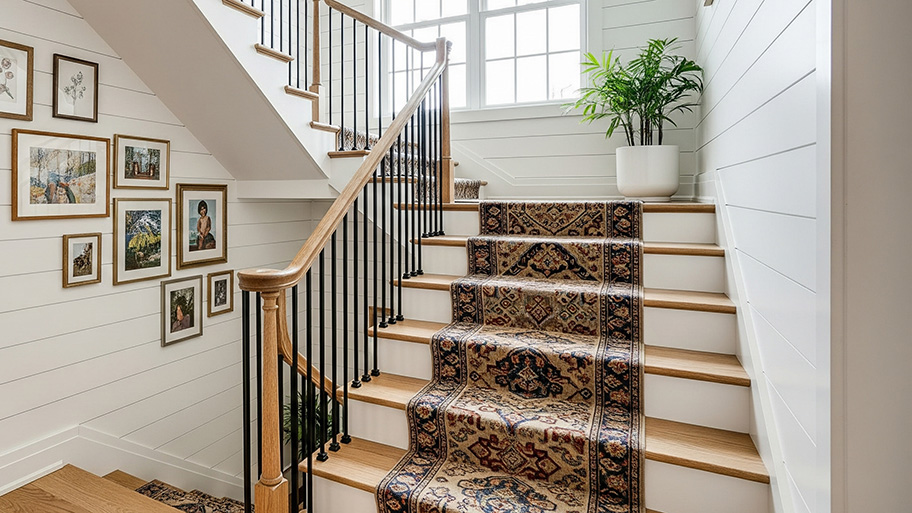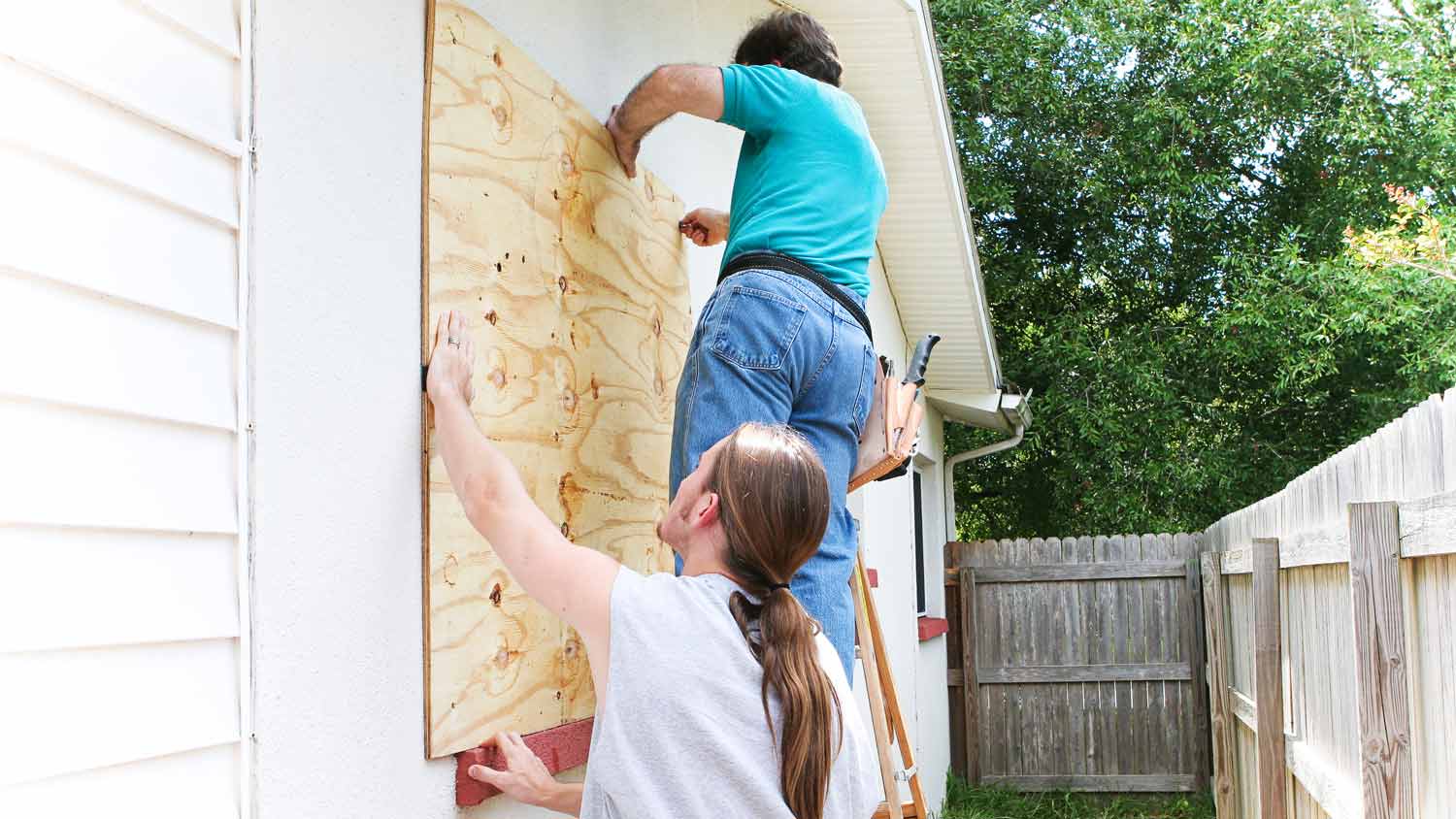
Discover stair repair cost estimates, including average prices, key cost factors, and tips to help you budget for your stair repair project.
Most storm damage repairs cost an average of $12,384, with most homeowners spending between $2,642 to $22,127. Factors include damage type, materials, and labor. Key factors include repair scope, materials, and location.


Storm damage repair costs cover a range of repairs, including roofs, siding, windows, and more after severe weather.
The main cost factors include the type and extent of damage, materials used, and labor rates in your area.
Investing in storm repairs can protect your home’s value and prevent larger, more expensive problems later.
Addressing repairs quickly helps stop further damage from water, mold, or structural issues.
For many repairs, labor can add $50 to $150 per hour, so comparing quotes and acting fast is a smart move.
This article was created using automation technology and thoroughly fact-checked and edited by an Angi Editor in accordance with our AI policy.
Storm damage repair costs can add up quickly after severe weather. On average, homeowners spend $2,642 to $22,127 for storm damage repairs, with most paying around $12,384. Smaller damages can be as little as $249, while large, more complex damage repair can exceed $60,000.
Costs depend on the type and extent of damage, materials, and labor required. Understanding these factors helps you budget for storm damage repair costs and make informed decisions. This guide explains what impacts storm damage repair costs and how to plan for post-storm repairs.
Several major factors influence storm damage repair costs. Let’s walk through what you should consider when budgeting for repairs after a storm.
Storms can damage different parts of your home, from roofs and siding to windows and landscaping. The type of repair needed plays a big role in the total cost. For example, roof repairs are often urgent and can be more expensive than simple gutter fixes. Below, you’ll find a breakdown of average costs by repair type.
| Repair Type | Description | Cost Range |
|---|---|---|
| Roof | Shingle replacement, leak repair, structural fixes | $1,200–$8,000 |
| Siding | Crack, hole, or panel replacement | $600–$5,500 |
| Windows | Glass, frame, or seal repair/replacement | $250–$3,500 |
| Gutters | Reattachment, section replacement, cleaning | $200–$2,000 |
| Foundation | Crack repair, stabilization, water mitigation | $2,000–$15,000 |
| Interior Water | Drywall, flooring, insulation, mold removal | $1,000–$10,000 |
| Landscaping | Tree removal, fence, deck, shed repairs | $500–$7,500 |
The type of storm event—wind, hail, flooding, ice, tornado, or hurricane—has a major impact on repair costs. For example, flood damage often leads to expensive foundation and interior repairs, while hail damages roofs and siding.
| Storm Type | Description | Cost Range |
|---|---|---|
| Wind | Roof, siding, fence, window damage | $500–$10,000 |
| Hail | Roof, siding, window, vehicle damage | $1,000–$8,000 |
| Flood | Foundation, interior, mold, landscaping | $2,500–$15,000 |
| Ice/Snow | Roof, gutter, water intrusion | $800–$7,000 |
| Tornado | Extensive structural, roof, window damage | $5,000–$30,000 |
| Hurricane | Roof, siding, flooding, structural | $3,000–$25,000 |
The size of the damaged area or your overall home directly impacts storm damage repair costs. Larger roofs, more windows, or a bigger foundation mean more materials and labor.
| Area/Size | Description | Cost Range |
|---|---|---|
| Small area | Single room, small roof or siding section | $500–$2,500 |
| Medium area | Several rooms, partial roof, multiple windows | $2,500–$7,500 |
| Large area | Entire roof, whole-home siding, major foundation | $8,000–$30,000 |
Material choices play a big role in storm damage repair costs. For example, standard asphalt shingles are less expensive than metal roofing, and vinyl siding costs less than fiber cement.
| Material Type | Description | Cost Range |
|---|---|---|
| Asphalt shingles | Standard roofing, basic protection | $4,000–$8,000 |
| Metal roofing | Durable, storm-resistant | $7,500–$15,000 |
| Vinyl siding | Affordable, easy to repair | $600–$3,500 |
| Fiber cement siding | Durable, high-end protection | $2,500–$7,500 |
| Standard windows | Basic glass and frame | $250–$1,000 |
| Impact-resistant windows | Stronger, better for storm-prone areas | $700–$3,500 |
Manufacturer or contractor warranties can help offset storm damage repair costs. Roofing or window warranties may cover all or part of the repair if the materials fail within the coverage period. However, most warranties have limitations, such as excluding damage from specific weather events or requiring proper maintenance records.
In storm-prone regions, ongoing maintenance plans can help reduce long-term storm damage repair costs. These plans often include regular inspections, minor repairs, and preventive care. By catching problems early, maintenance plans can minimize the need for major repairs after a storm and may even extend the life of your home’s exterior features.
Storm damage repairs involve multiple professionals, such as roofers, general contractors, water damage specialists, and arborists. Labor rates range from $50 to $150 per hour, depending on the trade and location. Emergency or after-hours repairs can increase labor costs by 20% to 50%.
Where you live affects storm damage repair costs. High cost-of-living areas or regions with frequent storms often see higher prices due to demand. The location of the damage within your home—such as a hard-to-reach attic or basement—can also raise costs due to increased labor or equipment needs.
Storm damage often requires additional services like debris removal, emergency tarping, temporary weatherproofing, mold remediation, permit fees, or even temporary housing. These add-ons can increase your total bill by $500 to $5,000, depending on the scope and urgency.
After a storm, deciding whether to repair or replace damaged components is important. Repairs are best when the damage is minor, materials are relatively new, or warranties are still valid. If the damage affects more than 50% of the component—such as your roof or siding—replacement is often the better long-term investment. Insurance coverage and the age of materials also influence this decision.
Repairing a roof or siding can cost less upfront, but repeated repairs can add up over time. Replacement may offer a better return on investment by improving your home’s durability and energy efficiency. Always weigh the long-term benefits and consult with a trusted contractor before making a final choice.
DIY storm damage repairs can save money by cutting out labor costs. Expenses for DIY projects include materials, tools, equipment rental, and your own time. While handling minor repairs like patching drywall or clearing debris may be feasible for experienced homeowners, larger or more complex repairs—such as structural fixes or roofing—require professional skills and tools.
Professional repairs cost more but ensure safety, code compliance, and quality. Improper DIY repairs can lead to higher future costs if issues are missed or worsened. For tasks like electrical work, mold remediation, or major roof repairs, always hire a local licensed pro to protect your home and your safety.
There are several ways to keep your storm damage repairs wallet-friendly without sacrificing quality. Taking these steps can help you save money and get the results you want:
Schedule repairs promptly to prevent further damage and avoid larger repairs.
Obtain multiple quotes from licensed contractors to compare pricing and services.
Use insurance coverage and understand your policy to get the most coverage possible.
Choose durable, storm-resistant materials that will stand up to future storms for long-term savings.
Perform regular maintenance to reduce future repair needs, liking addressing minor issues as they arise.
Home is the most important place on earth, which is why Angi has helped more than 150 million homeowners transform their houses into homes they adore. To help homeowners with their next project, Angi provides readers with the most accurate cost data and upholds strict editorial standards. We extensively research project costs to develop the pricing data you see, so you can make the best decisions for you and your home. We rely on reputable sources, including the U.S. Bureau of Labor Statistics, academic journals, market studies, and interviews with industry experts—all to ensure our prices reflect real-world projects.
Want to help us improve our cost data? Send us a recent project quote to [email protected]. Quotes and personal information will not be shared publicly.
From average costs to expert advice, get all the answers you need to get your job done.

Discover stair repair cost estimates, including average prices, key cost factors, and tips to help you budget for your stair repair project.

Home elevator costs depend on the size and type of lift, if it needs retrofitting, and the number of floors. Our guide outlines all residential elevator costs.

Recessed living rooms used to be popular but have fallen out of favor. This guide discusses the cost to raise a sunken living room to modernize your home.

As you ring in the new year, you may wonder: What are the top home improvement ideas of 2025? Read on for a full breakdown of in-demand projects on the horizon.

The cost to install a wheelchair platform depends on size, type, labor, and other factors. See how much your wheelchair platform could cost.

Learn when and why a project manager vs. general contractor is better for major home makeovers or construction projects with this comparison guide.